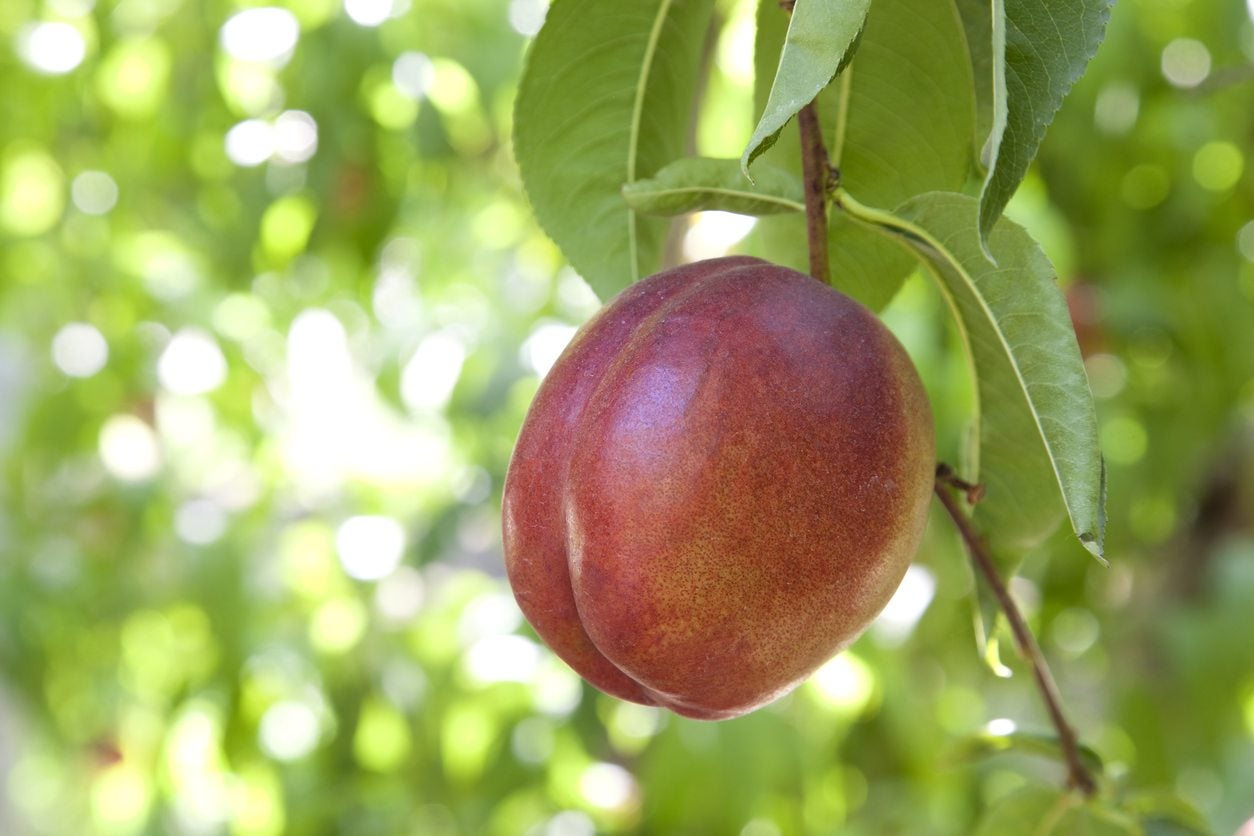Zone 4 Nectarine Trees: Types Of Cold Hardy Nectarine Trees

Growing nectarines in cold climates is not historically recommended. Certainly, in USDA zones colder than zone 4, it would be foolhardy. All that has changed though and there are now cold hardy nectarine trees available, nectarine trees suited for zone 4 that is. Read on to find out about zone 4 nectarine trees and caring for cold hardy nectarine trees.
Nectarine Growing Zones
The USDA Hardiness Zone map is divided into 13 zones of 10 degrees F. each, ranging from -60 degrees F. (-51 C.) to 70 degrees F. (21 C.). Its purpose is to aid in identifying how well plants will survive winter temperatures in each zone. For example, zone 4 is described as having a minimum average temperature of -30 to -20 degrees F. (-34 to -29 C.). If you’re in that zone, then it gets pretty chilly in the winter, not arctic, but chilly. Most nectarine growing zones are in USDA hardiness zones 6 to 8 but, as mentioned, there are now more newly developed varieties of cold hardy nectarine trees. That said, even when growing nectarine trees for zone 4, you may need to provide extra winter protection for the tree, especially if you are prone to Chinooks in your area which can begin to thaw the tree out and crack the trunk. Also, every USDA zone is an average. There are a multitude of microclimates in any one USDA zone. That means that you might be able to grow a zone 5 plant in zone 4 or, conversely, you may be particularly susceptible to colder winds and temps so even a zone 4 plant is stunted or won’t make it.
Zone 4 Nectarine Trees
Nectarines are genetically identical to peaches, just without the fuzz. They are self-fertile, so one tree can pollinate itself. They do require a chill time to set fruit, but overly cold temperatures can kill the tree. If you have been limited by your hardiness zone or the size of your property, there is a cold hardy miniature nectarine tree now available. The beauty of miniature trees is that they are easier to move around and protect from the cold. Stark HoneyGlo miniature nectarines only attain a height of about 4 to 6 feet (1-2 m.). It is suited for zones 4 through 8 and can be grown in an 18 to 24 inch (46-61 cm.) container. The fruit will ripen in late summer. ‘Intrepid’ is a cultivar that is hardy in zones 4 to 7. This tree produces large, firm freestone fruit with sweet flesh. It is hardy to -20 F. (-29 C.) and ripens in mid to late August. ‘Messina’ is another freestone crop that has sweet, large fruit with the classic look of a peach. It ripens at the end of July. Prunus persica ‘Hardired’ is a nectarine that with good protection and, depending upon your microclimate, might work in zone 4. It ripens in early August with predominantly red skin and yellow freestone flesh with good flavor and texture. It is resistant to both brown rot and bacterial leaf spot. Its recommended USDA hardiness zones are 5 to 9 but, again, with sufficient protection (aluminum bubble wrap insulation) might be a contender for zone 4, as it is hardy down to -30 degrees F. (-34 C.). This hardy nectarine was developed in Ontario, Canada.
Growing Nectarines in Cold Climates
When you are happily flipping through catalogues or on the internet searching for your cold hardy nectarine, you may notice that not only is the USDA zone listed but also the number of chill hours. This is a pretty important number, but how do you come up with it and what is it? Chill hours tell you how long the cold temps last; the USDA zone only tells you the coldest temps in your area. The definition of a chill hour is any hour under 45 degrees F. (7 C.). There are a couple of methods to calculate this, but the easiest method is to let someone else do it! Your local Master Gardeners and Farm Advisors can help you find a local source of chill hour information. This information is extremely important when planting fruit trees since they need a specific number of chill hours per winter for optimal growth and fruiting. If a tree doesn’t get enough chill hours, the buds might not open in the spring, they might open unevenly, or leaf production might be delayed, all of which affects fruit production. Additionally, a low chill tree planted in a high chill area could break dormancy too soon and become damaged or even killed.
Gardening tips, videos, info and more delivered right to your inbox!
Sign up for the Gardening Know How newsletter today and receive a free copy of our e-book "How to Grow Delicious Tomatoes".

Amy Grant has been gardening for 30 years and writing for 15. A professional chef and caterer, Amy's area of expertise is culinary gardening.